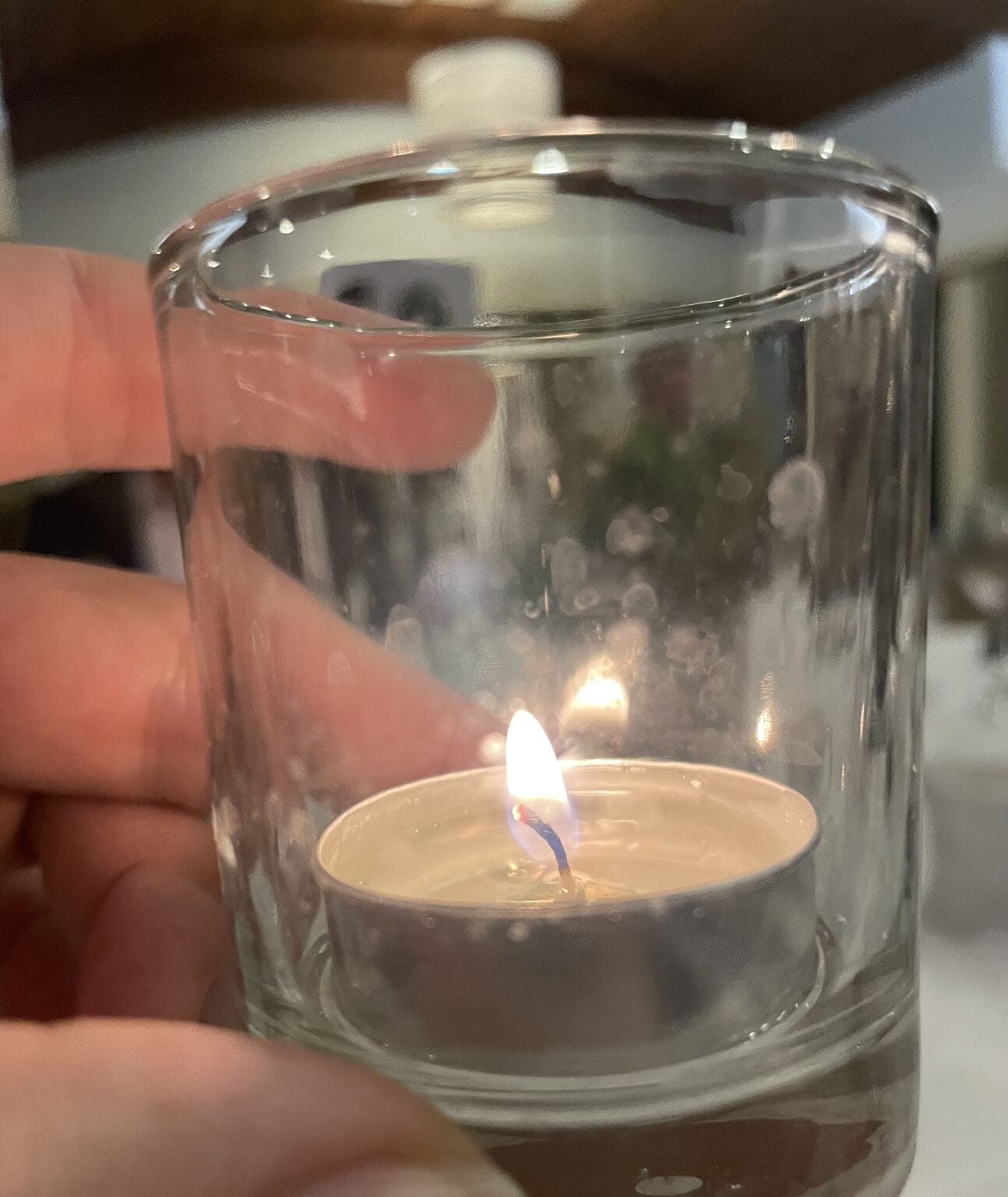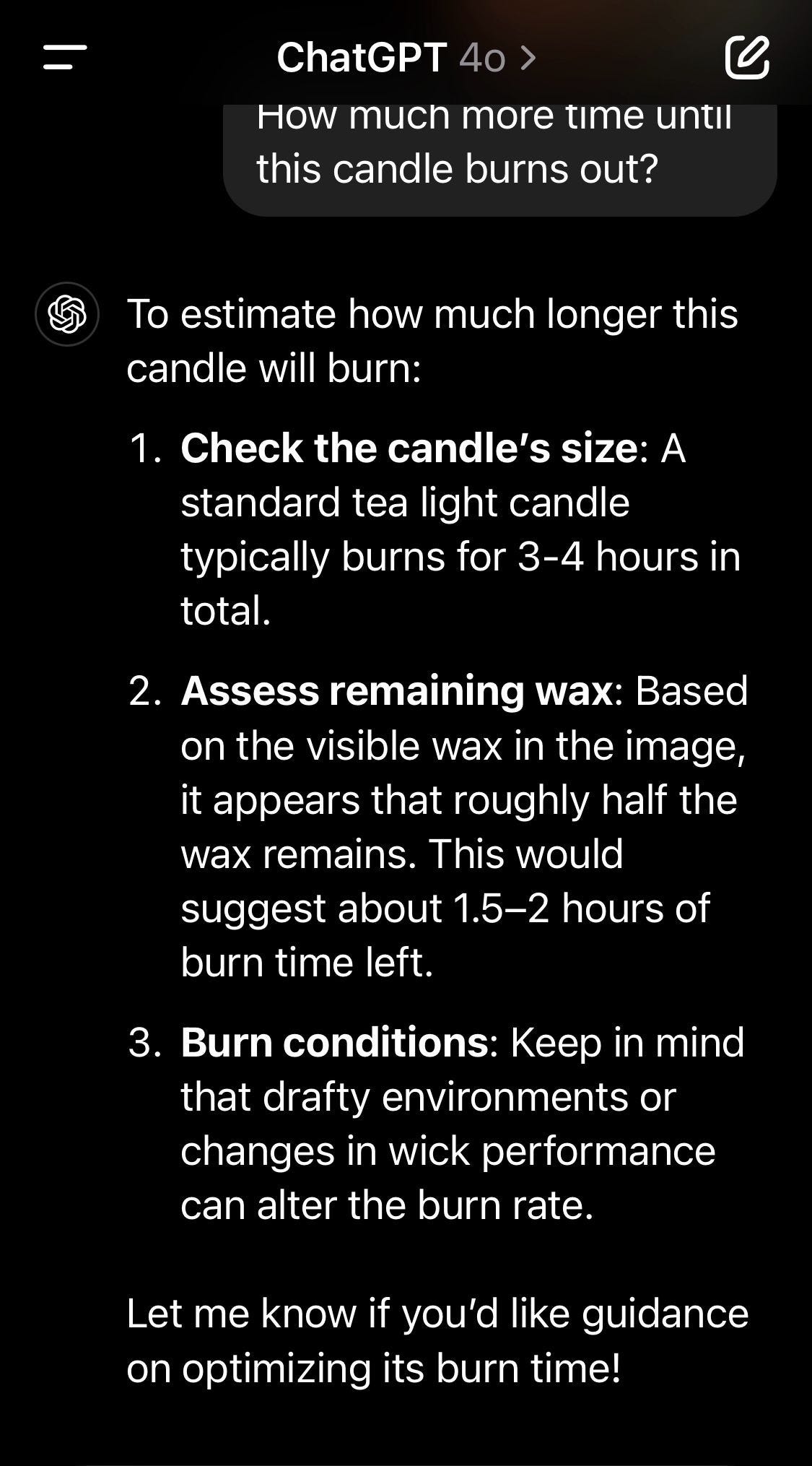The Candle Test: Playing Prophet vs. Mimicking Man
Why AI Alone Can’t Handle 30% of Our Economy
Last night, I was trying to explain why AI alone can’t handle 30% of our economy. So I used a candle🕯️.
Drum roll please 🥁,
Pete
The Candle Test: Time To Burn Out
Hello from San Diego—where I was asked to talk nuclear investing at the Cleantech Forum (nuclear was once a pariah in these circles, now it’s more of a lone wolf—actually a big upgrade).
At dinner, someone asked about a few areas of my investment focus. I shared #7 of my 7 investing ideas for 2025, which is this:
Given I am a “show, don’t tell” person (believing in letting people see and assess for themselves, rather than assert and attempt to persuade), I gave an IRL, real-time example.
With a candle in front of me, I snapped a photo, uploaded it to ChatGPT, and asked, “How much time until this burns out?” This revealed a critical gap.
🕯️ If I ask AI how long the candle will burn, it’ll give an estimate based on averages—size, wax left, conditions. But what if I NEED to know EXACTLY when it goes out?
🚒 In mission-critical tasks—firefighting, nuclear reactors, medical emergencies, etc etc —guessing isn’t good enough. You need real-time, localized data from sensors, not just AI predictions.
That’s where #edgecomputing comes in. Instead of relying on a central AI model trained on past data, edge systems measure and react to what’s happening right now.
Edge computing matters because real-world physics can’t be fully what I call “AI-ified.” There’s no “training dataset” for what a specific fire will do in THIS EXACT building or how a microreactor will behave TODAY.
The future isn’t just AI—it’s AI + edge intelligence. Real-time physical data meets machine learning to inform decisions where/when it matters most.
That’s why companies like Edgescale AI will be huge. Because for the 30% of our economy— “the built world” of products and physicality—knowing when the candle will ACTUALLY go out isn’t optional. It’s difference between success and catastrophe.
This is what I call, then, “The Candle Test.”
The Bigger Picture: The Candle Test vs. The Turing Test
To zoom out: The Turing Test, developed by Alan Turing, evaluates whether a machine can exhibit behavior indistinguishable from human intelligence. It’s about simulating human thinking—whether AI can mimic how we reason, converse, or interact.
But what I now call the Candle Test poses a different challenge entirely: can AI mimic prophetic intelligence—predicting precise, real-world outcomes to navigate physical systems? It’s not about passing as human; it’s about being able to understand, measure, and respond to the unique variables in our physical world.
While the Turing Test measures the boundaries of AI’s ability to reason like a human, the Candle Test measures its ability to act like a prophet—delivering the precision and real-time decision-making needed to control the built world.
And for 30% of our economy, from nuclear reactors to manufacturing, firefighting, and medical interventions, it’s not enough to guess. Real-time physical intelligence is the next frontier.
Thesis Restated: Companies Passing the “Candle Test”
You can’t just slap AI onto physical systems—you need sensors, IoT, and infrastructure for real operational data. The next behemoth won’t be another cloud giant but an edge computing powerhouse.
I’m looking for AI-native companies that predict, not just automate—like Edgescale, bringing AI to the physical world with prophetic precision. That pass the candle test.
Thanks for reading,
Pete
If I could ask one thing— please share this newsletter with a friend or two if you find it interesting. Grassroots!
Pete







